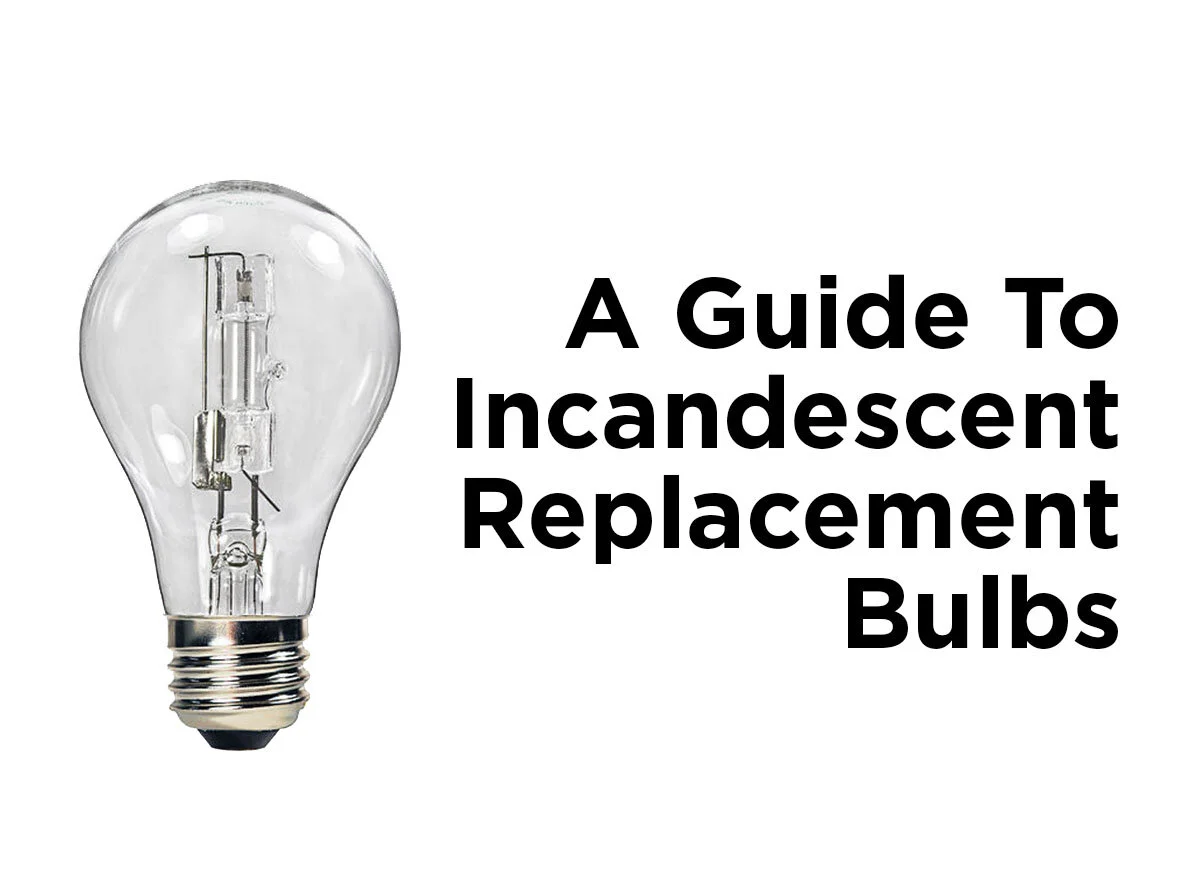A Guide to Incandescent Replacement Bulbs
Over the last couple of years, government regulations affecting standards of energy efficiency have started to have an impact on what type of light bulbs can continue to be manufactured. Having just completed the final phase-out of general service incandescent light bulbs between 40 and 100 watts in January of 2014, the EISA light bulb ban has left some wondering what they will do when banned incandescent bulbs finally disappear from the shelves. While there’s always the option of buying “rough service” incandescent bulbs (currently exempt from the light bulb ban) some of you may also be thinking about making the switch to an alternative, more efficient light bulb. If you are, you have three options: halogen, compact fluorescent, and LED (light emitting diode). Now that there are more options for replacing the bulbs in your table lamps and household light fixtures than ever before, the task can be a little daunting. In an effort to make your decision easier, this guide to your three replacement options weighs the pros and cons of each light source so you don’t have to.
Halogen
Pros:
Halogen lamps are slightly more efficient than incandescent bulbs
Available in the same classic shape as standard incandescents
Fully dimmable and compatible with most incandescent dimmers
Instant-on – no delays in reaching full brightness
Perfect Color Rendering Index (CRI) of 100
Produces a slightly brighter, whiter light than incandescents
Cons:
Halogen bulbs and lamps burn hotter than incandescent bulbs
Least efficient out of other replacements
Its filament and glass tube are sensitive to rough handling and vibration
Oil from hands left on the glass of the bulb can cause damage
Although they’re still available, halogen PAR lamps have been banned due to the inability to meet government efficiency requirements
Compact Fluorescent Lamp (CFL)
Pros:
Compact fluorescent lamps (CFLs) use significantly less energy than incandescent lamps (50 to 80 percent)
Versatile shapes and base types that can fit into almost any incandescent household application
Available in all of the same color temperatures as incandescent bulbs
Can be purchased in dimmable options (CCFLs)
Has an average life expectancy of up to 10,000 hours
Produces less heat than incandescent and halogen bulbs
Cons:
CFLs contain small amounts of mercury. Though it’s not dangerous while in the bulb, if the bulb is broken, it needs to be disposed of carefully and correctly.
Most have warm-up times anywhere from 30 to 60 seconds
Are not able to dim as well as halogens, incandescents, or LEDs (has the worst dimming capabilities of all)
Frequent on and off cycling and cold temperatures can significantly reduce their lifespan
Light Emitting Diode (LED)
Pros:
LEDs are 90 percent more efficient than incandescent bulbs
Available in a variety of color temperatures
Not sensitive to cold environments
Produce next to no heat or UV emissions
Available in dimmable options
Able to withstand heavy vibrations and rough handling due to the lack of a sensitive filament
Can be cycled on and off frequently without shortening the lifespan
Longest average life expectancy of all incandescent replacements, lasting up to 25 to 50 times longer
Cons:
Highest initial cost of all incandescent replacements
Can’t be used in completely enclosed fixtures
May shift color over time due to age and environmental factors
May require the installation of LED drivers if not already built into the bulb
Do you have any more burning questions about halogens, CFLs, or LEDs that you need answered? Ask away in the comments below or contact us on our Facebook, Twitter, LinkedIn, or Pinterest page!










